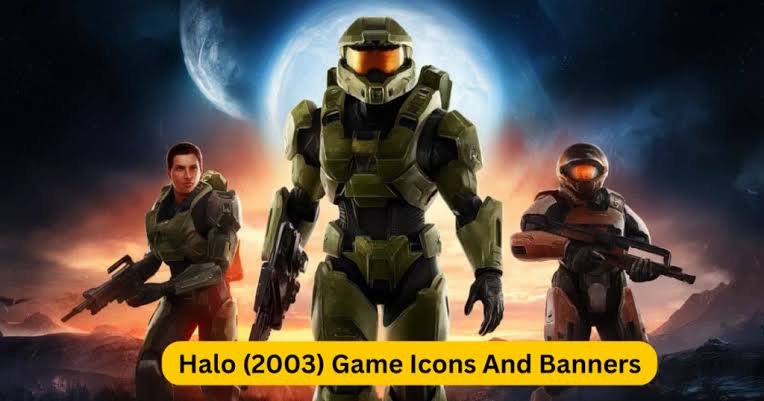Overview of Halo’s Iconic Design
Released in 2001 by Bungie and Microsoft Game Studios, “Halo: Combat Evolved” quickly became a defining game for the Xbox and a beloved franchise. Its iconic visual elements, especially its game icons and banners, contributed significantly to its brand identity and fan base appeal.
Design and Symbolism
Halo’s game icons and banners are instantly recognizable due to their distinctive design and symbolism. The primary icon, the helmet of the Master Chief, represents both the player’s character and the overarching themes of heroism and mystery in the Halo universe. The design uses a muted color palette of greens and grays, which reflects the military and sci-fi elements of the game.
Banners and User Interface
The banners typically feature dramatic scenes from the game, including key characters like the Master Chief and Cortana, or pivotal moments such as battles against the Covenant. These banners not only serve as a marketing tool but also as a way to enhance the player’s immersive experience within the game. The user interface in Halo uses clean, futuristic fonts and minimalistic icons that are easy to navigate, reflecting the advanced technology of the game’s universe.
Cultural Impact
The design elements of Halo have had a significant cultural impact. They have become symbols of the early 2000s gaming culture and have influenced the design of other video games and media. Fans often use replicas of these icons and banners in personal projects, cosplay, and at gaming conventions, demonstrating the lasting appeal of Halo’s visual design.
Evolution Over Time
Over the years, as the Halo series has expanded, the icons and banners have evolved to include new characters and themes while maintaining the core aesthetic established in the original game. This evolution can be seen in the subsequent releases, where the graphics and icons have become more sophisticated but still retain elements that fans recognize and love.
Halo’s game icons and banners are more than just graphical elements; they are a central part of the game’s identity and an integral aspect of its success. They encapsulate the essence of the game’s story and its world, serving as a bridge between the game and its community. As Halo continues to grow, these icons will undoubtedly play a crucial role in defining its future visual and cultural landscape.
Expansion of Halo’s Visual Legacy
Integration with Other Media
Halo’s influence extends beyond the gaming world into other media, including books, comics, and animated series. Each of these mediums takes inspiration from the original game’s icons and banners, ensuring a cohesive visual and thematic link across the Halo franchise. For example, the novel Halo: The Fall of Reach uses similar stylized cover art featuring the iconic Spartan helmet, which helps maintain a uniform identity and appeal to fans across different formats.
Merchandising and Fan Art
Merchandise like T-shirts, posters, and action figures often feature the game’s iconic banners and artwork, allowing fans to display their affinity for the Halo universe. Additionally, fan art plays a significant role in the community, with amateur and professional artists alike creating their interpretations of Halo’s icons. This fan-generated content helps keep the community engaged and allows for a deeper exploration of the game’s themes and characters.
Digital and Physical Spaces
Halo’s game icons and banners are also prominent in digital spaces such as online forums, fan websites, and social media pages where fans gather to discuss the game. These icons are used to signal membership in the Halo community, creating a sense of belonging and shared identity. Furthermore, during esports tournaments and fan events, these visuals transform physical spaces into thematic extensions of the Halo world, enhancing the communal and immersive experience.
Educational and Professional Influence
The design principles evident in Halo’s icons and banners have also been studied in graphic design and game design courses, illustrating the game’s impact on educational practices. Professionals in the gaming industry often refer to Halo as a benchmark for effective visual communication and branding in game design, showing its influence on new generations of game designers.
Technological Advancements and Future Directions
As technology advances, so too does the capability to enhance and innovate on game graphics, including icons and banners. With new tools like augmented reality (AR) and virtual reality (VR), future iterations of Halo might incorporate more interactive and immersive visual elements. These advancements could lead to a more dynamic and engaging user interface, potentially setting new standards for game design aesthetics.
Legacy and Longevity
The enduring legacy of Halo’s visual elements showcases the power of strong, cohesive design in building a franchise that lasts. As Halo continues to evolve, its icons and banners will remain at the heart of its visual identity, likely adapting to new gaming trends and technologies while retaining the essence that fans have come to love. This blend of tradition and innovation is what makes Halo a standout example of video game branding and aesthetics.


